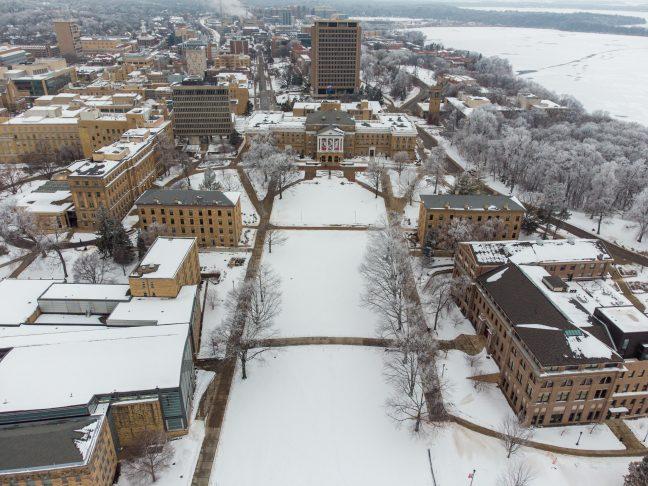Republicans recently struck down Gov. Tony Evers’ proposed $3.8 billion spending package for state buildings. The package, which was included in the state’s new budget, would have dedicated over half of its value to institutional buildings in the University of Wisconsin System.
As many UW students can attest to, classrooms across the school are in dire need of repairs or updates. In 2021, the governor authorized emergency work on campus after a slab of concrete fell from Van Hise Hall. While the immediate danger was quelled, Van Hise remains one of the least popular buildings on campus for its unconventional setup and stuffy classrooms.
Several of UW-Madison’s halls and classrooms have been criticized by students and faculty alike for their poor quality and dingy interiors. With poor lighting, small windows and worn-down desks and chalkboards, many classrooms on campus are simply not fostering a productive work environment for their students or their employees.
Tough-on-crime ads during Supreme Court election bear impacts of harmful legacy
In the latest Sustainability Tracking Assessment and Rating System report, UW-Madison also ranked last relative to its peer institutions in terms of its sustainability efforts. The report is based on a number of categories, but UW-Madison’s biggest shortcomings were in terms of its academics, infrastructure and sustainable investments. For the buildings on campus that are not yet up to code environmentally, this package could be the first step toward making a greener campus.
Many of UW-Madison’s older buildings are no longer up to code in other ways. North Hall remains one of the last buildings that is not ADA compliant, and there are still many buildings that do not yet have gender-inclusive bathrooms.
These are only issues facing UW-Madison’s campus — other universities in the UW System are also in a state of emergency. The UW System boasts 13 universities spread across 26 campuses — with this large of an operation spread across over two dozen campuses, a $3.8 billion dollar price tag is a necessary hit for the budget to take.
Congressional term limits are necessary to ensure accountable representatives
Not only this, but for the Republicans who voted against the package due to the expense, it should be noted that the return of investment on UW-Madison alone is hard to beat. The 2021-2022 Budget in Brief shows that for every dollar spent on UW-Madison, the institution brought in a $26.73 return on investment. The school also supports over 189,000 jobs across the school, UW Hospital and the institution’s affiliated organizations.
Investing in UW-Madison’s infrastructure is investing in its students, the institution and the state. For everything the school and the rest of the UW System provide to Wisconsin and beyond, it deserves to be provided the funding it needs for its campuses to reflect that.
Fiona Hatch ([email protected]) is a senior studying political science and international studies.








